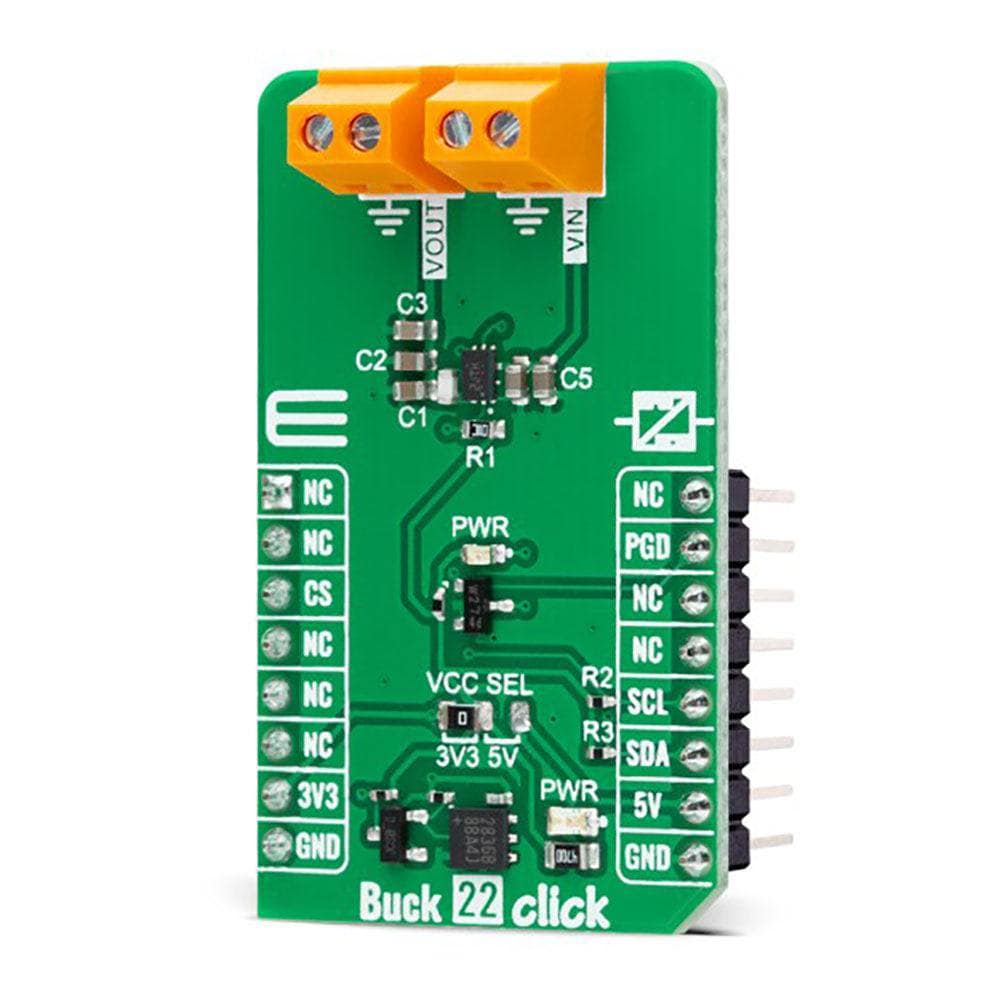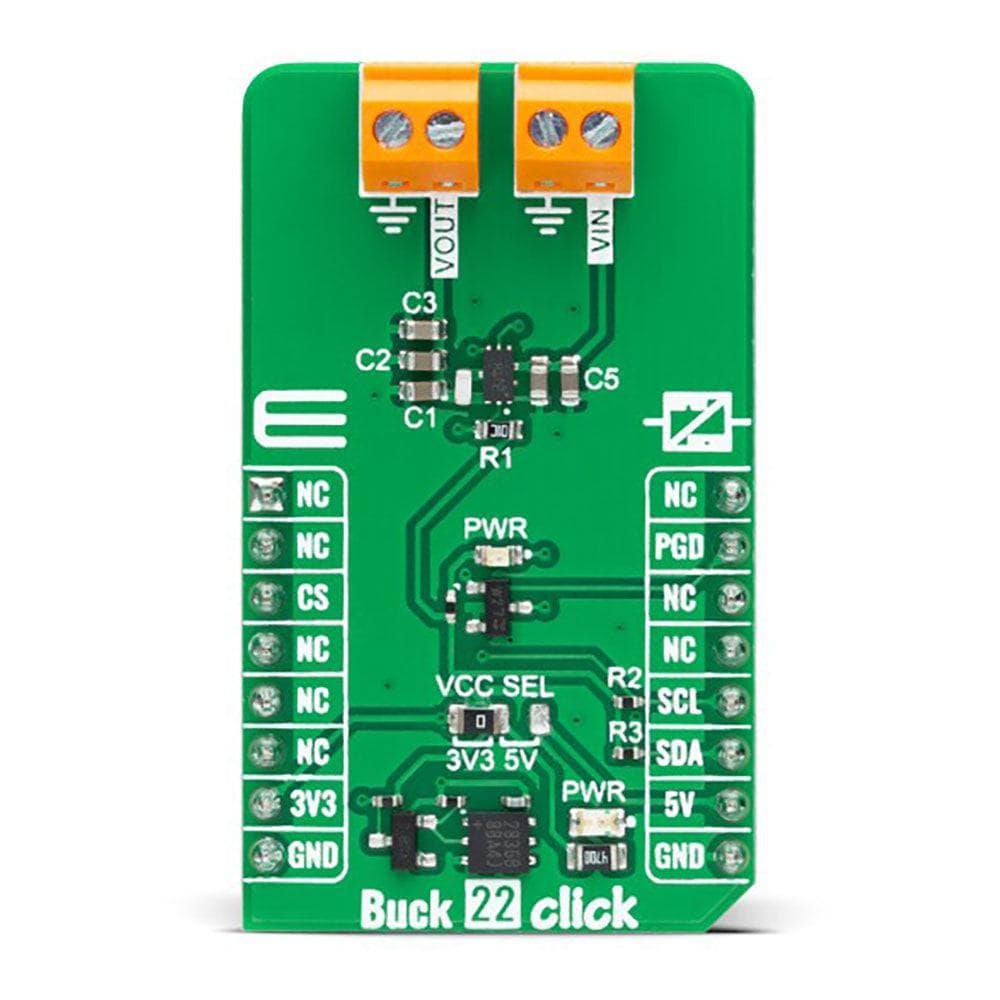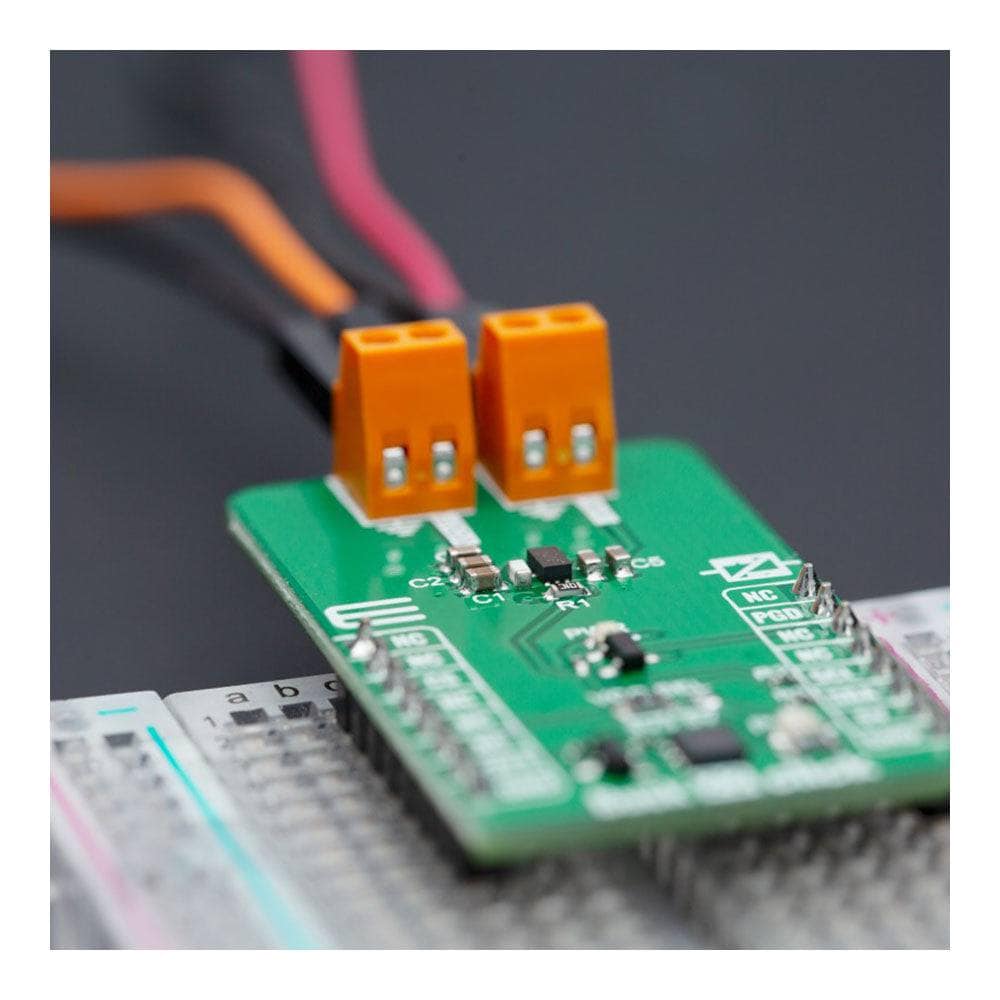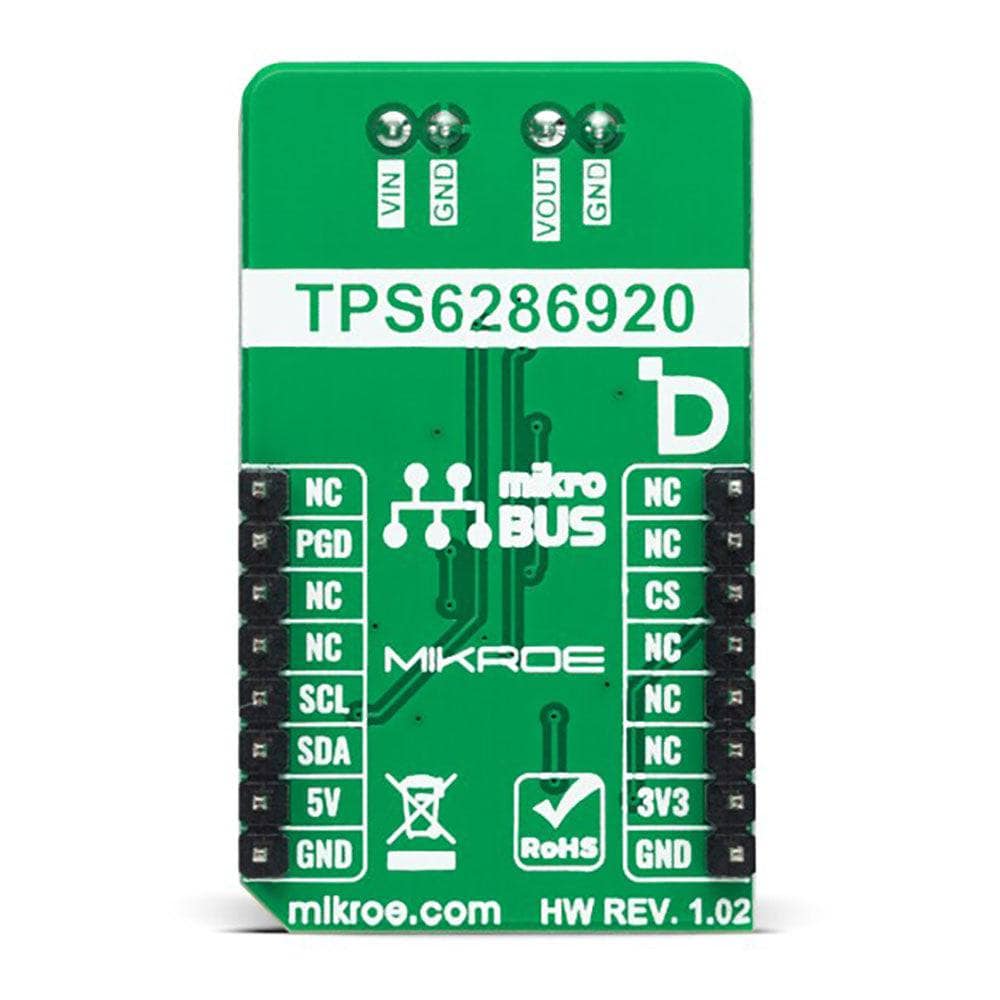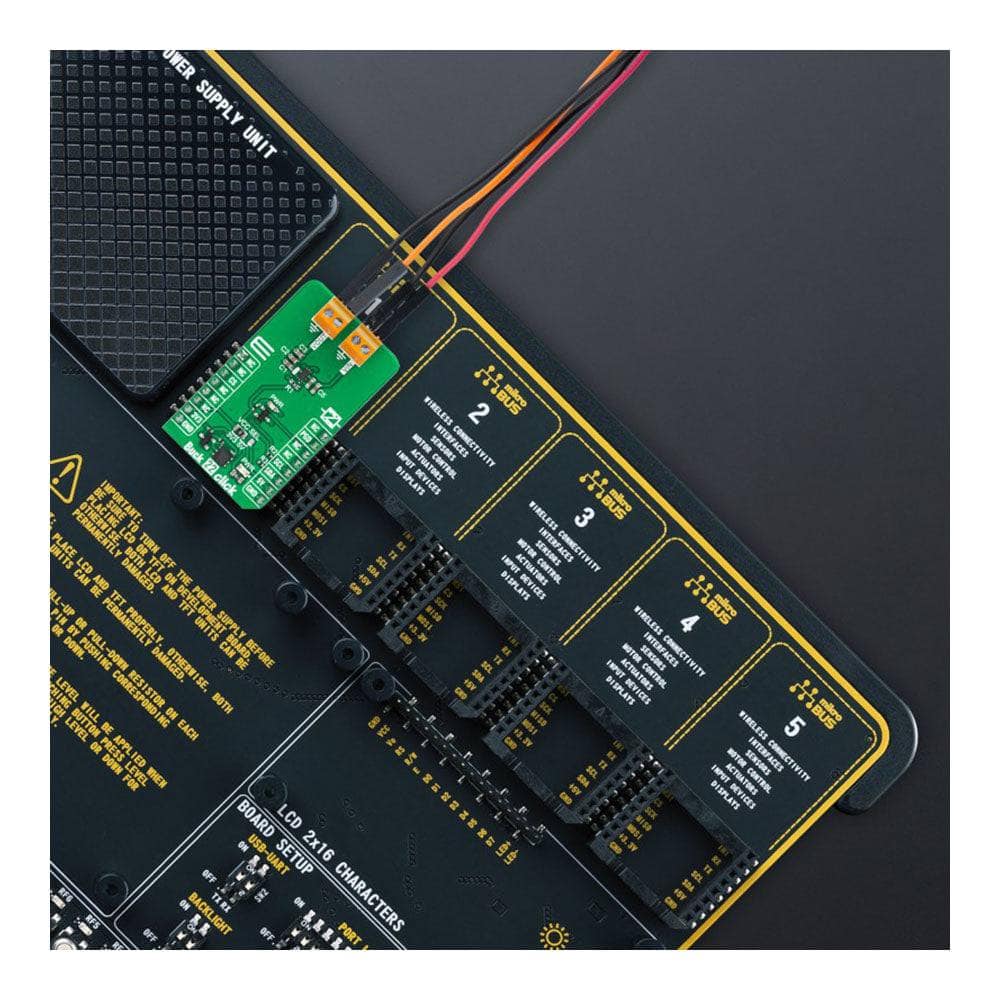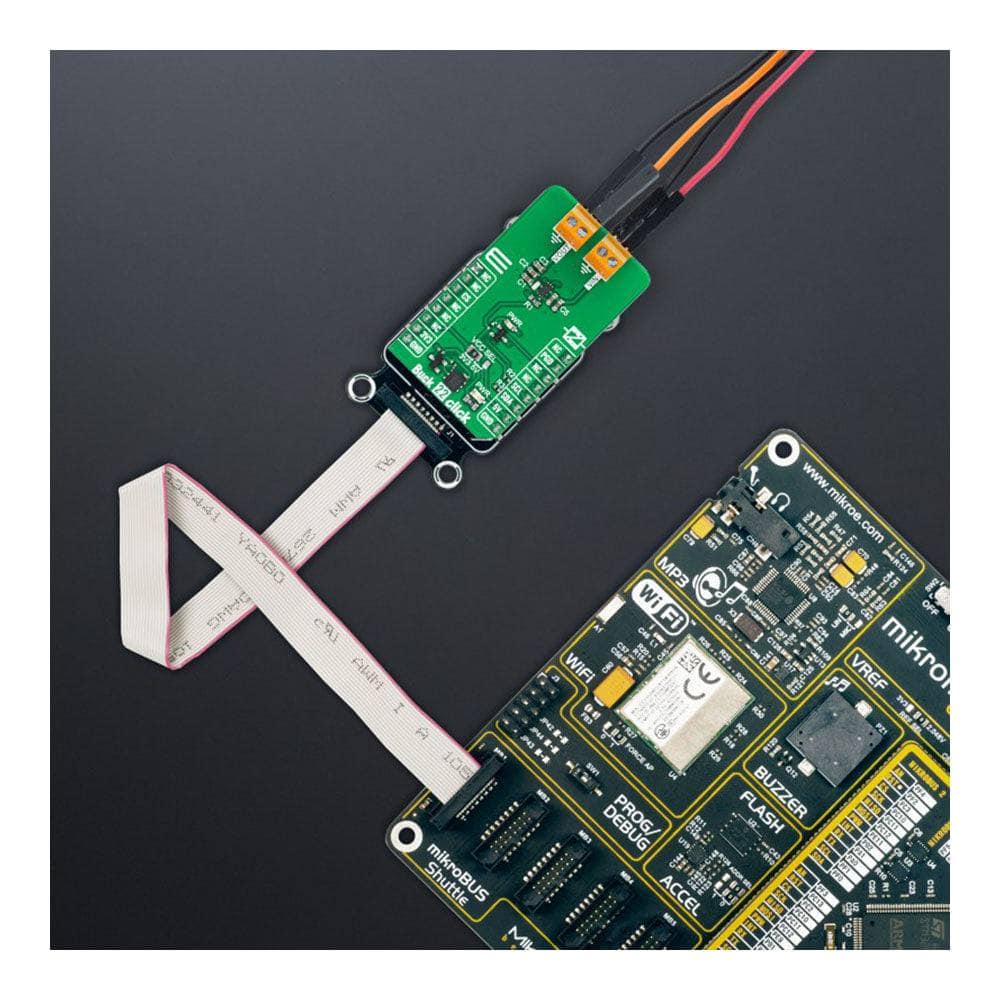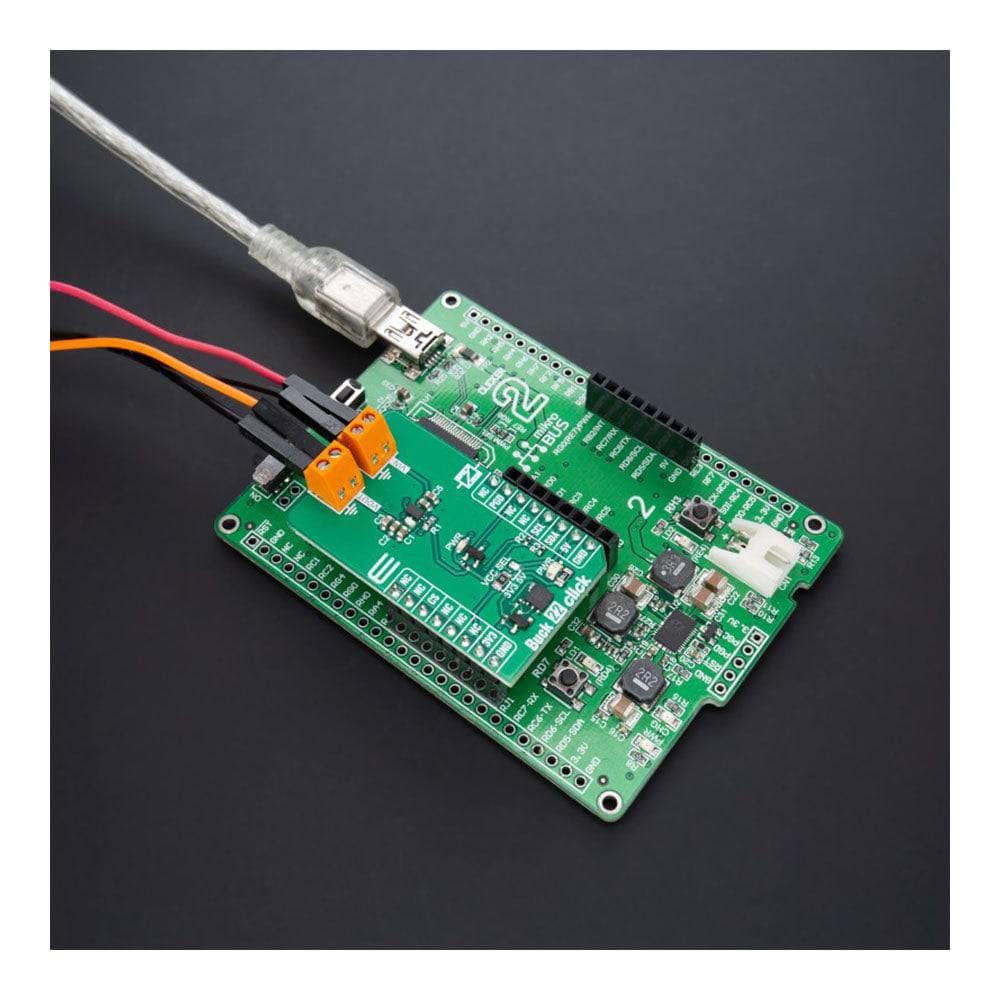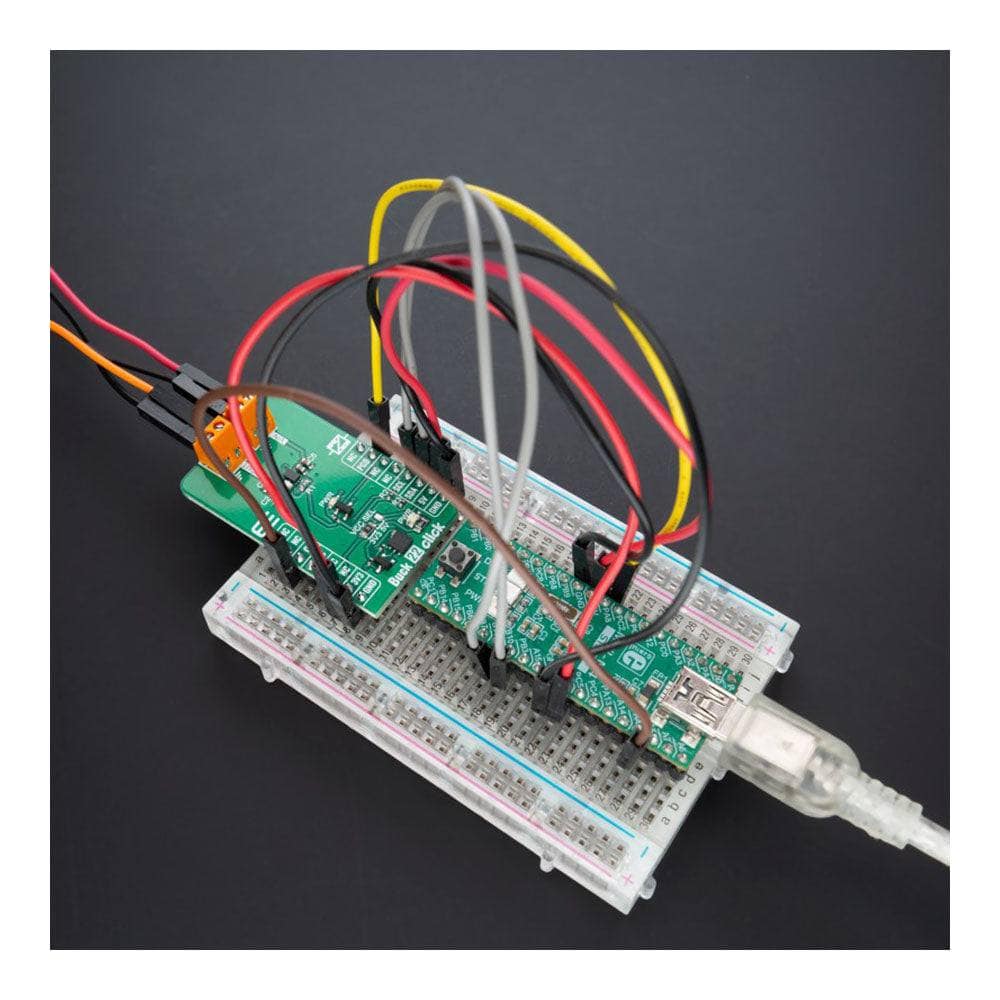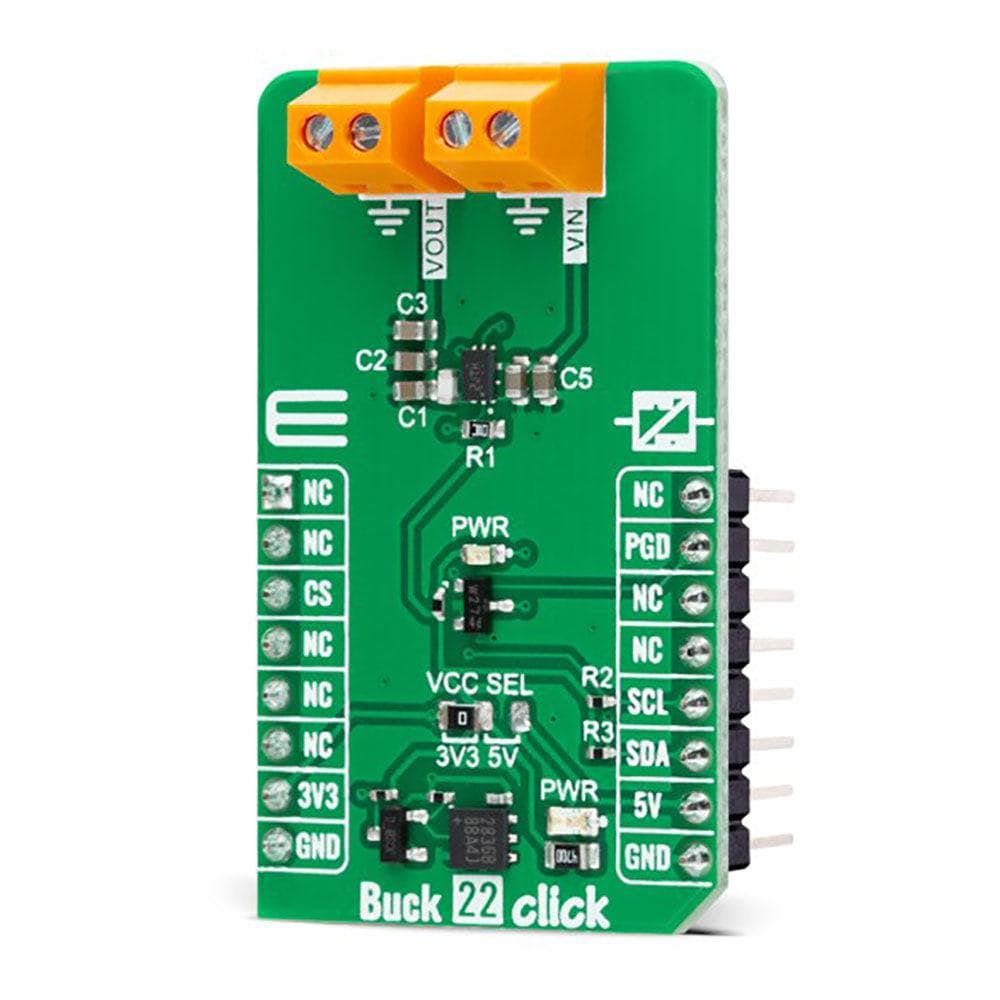
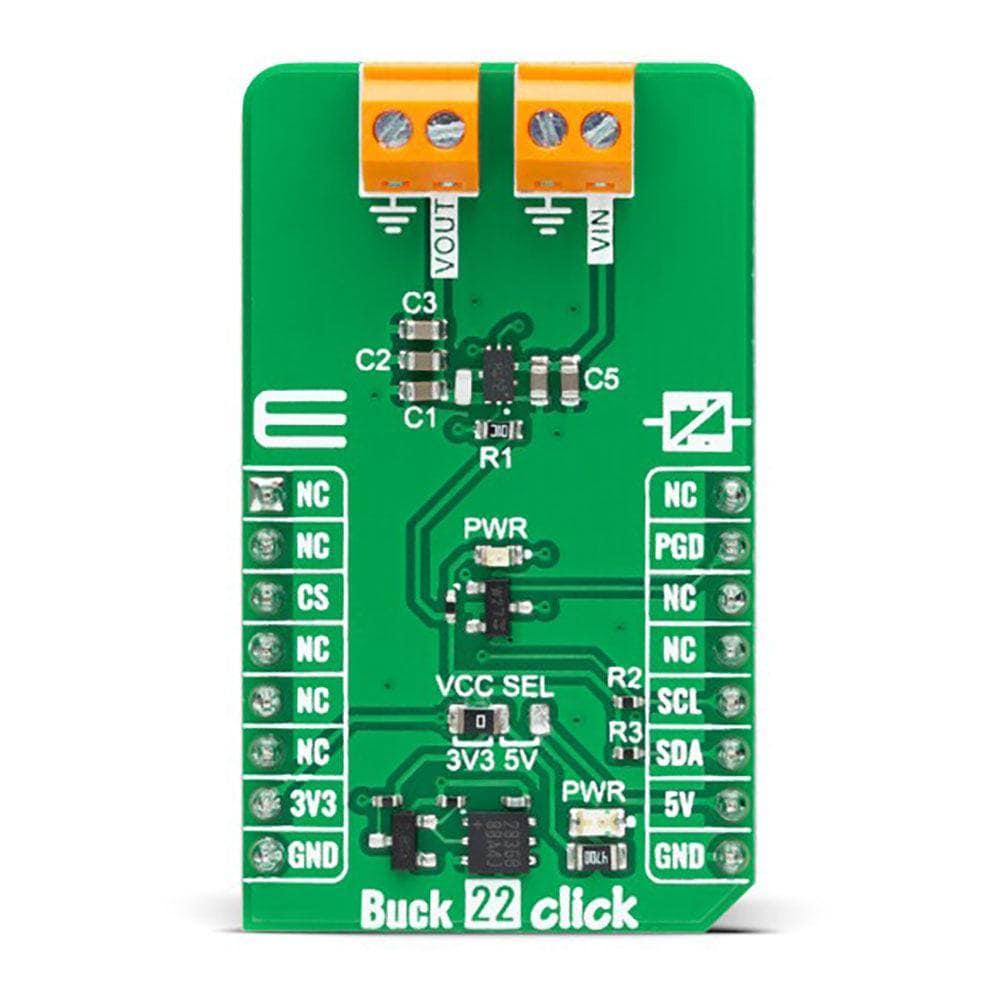
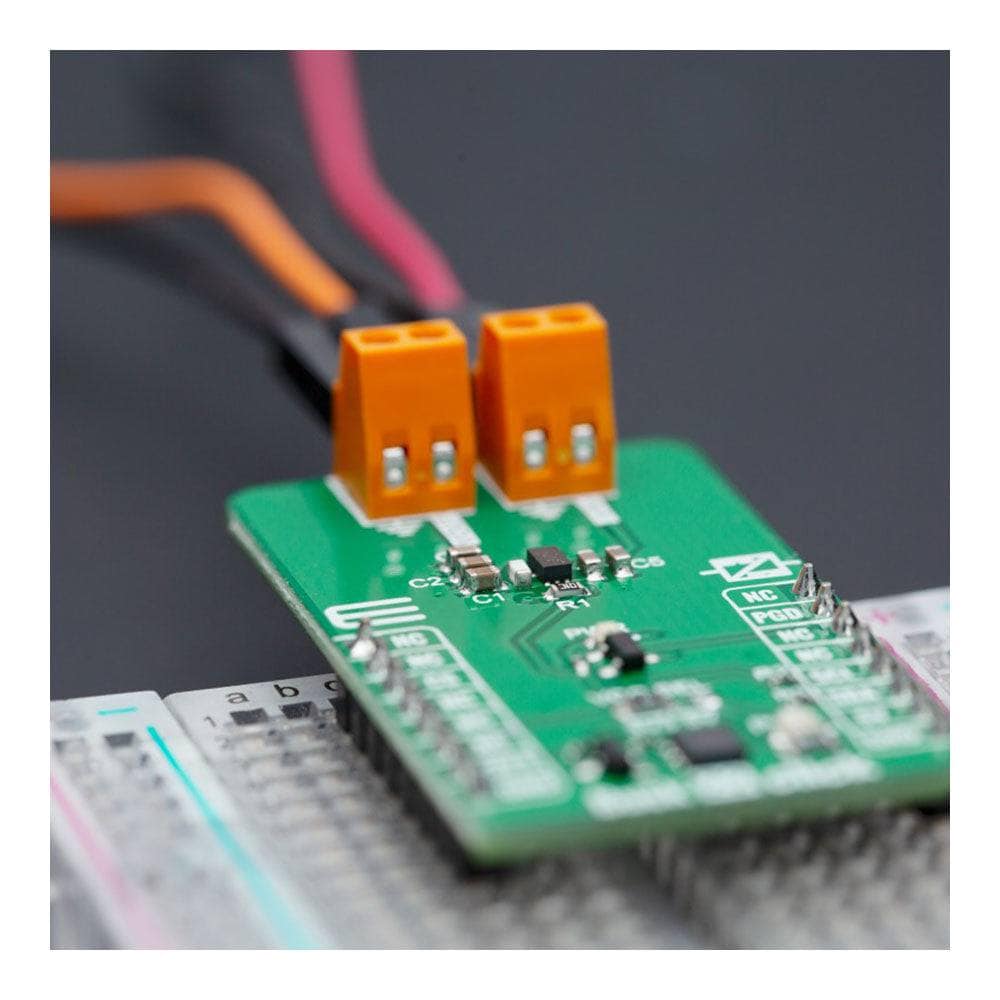
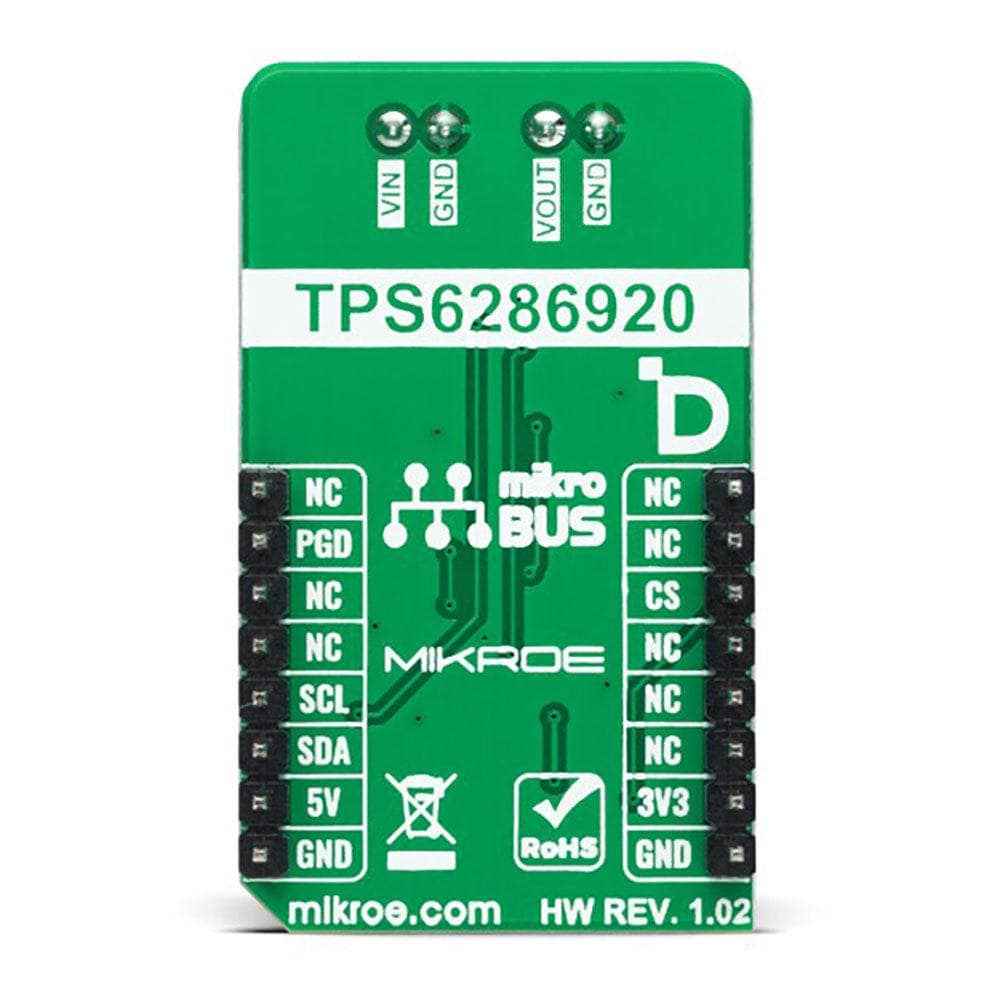
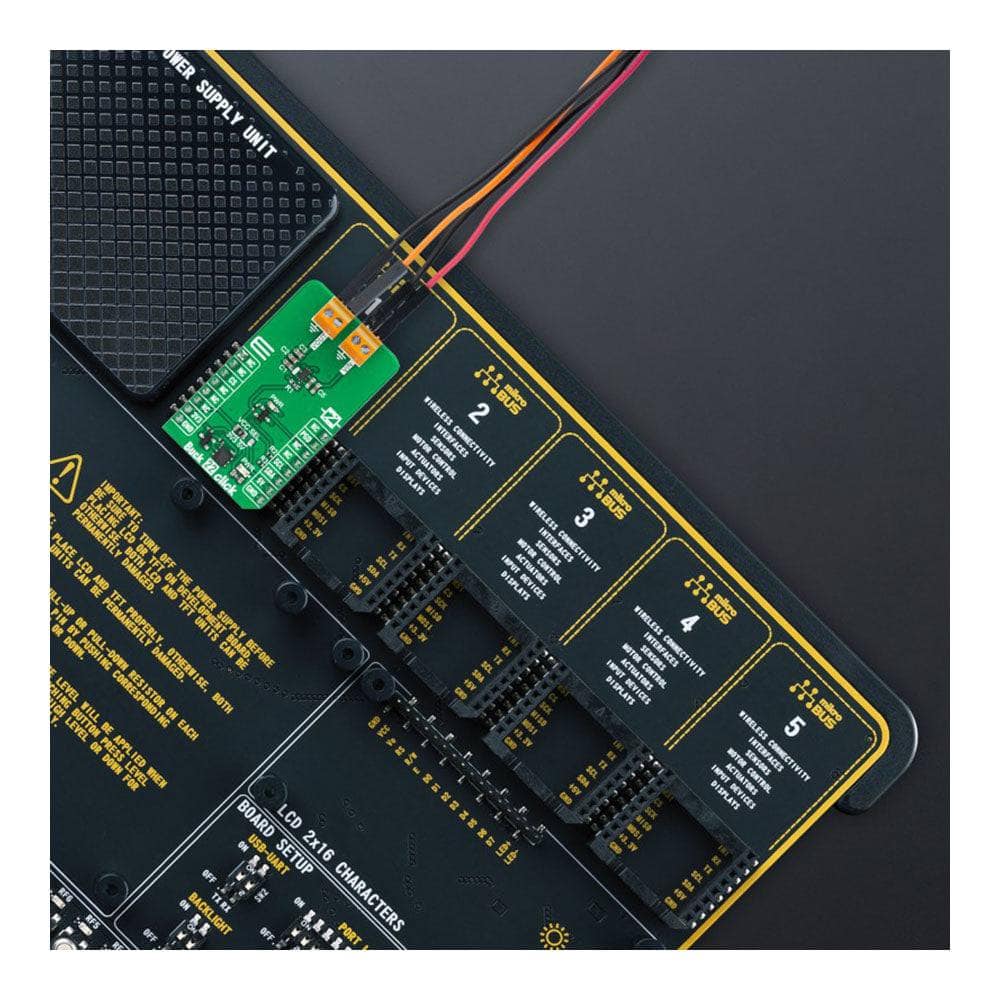
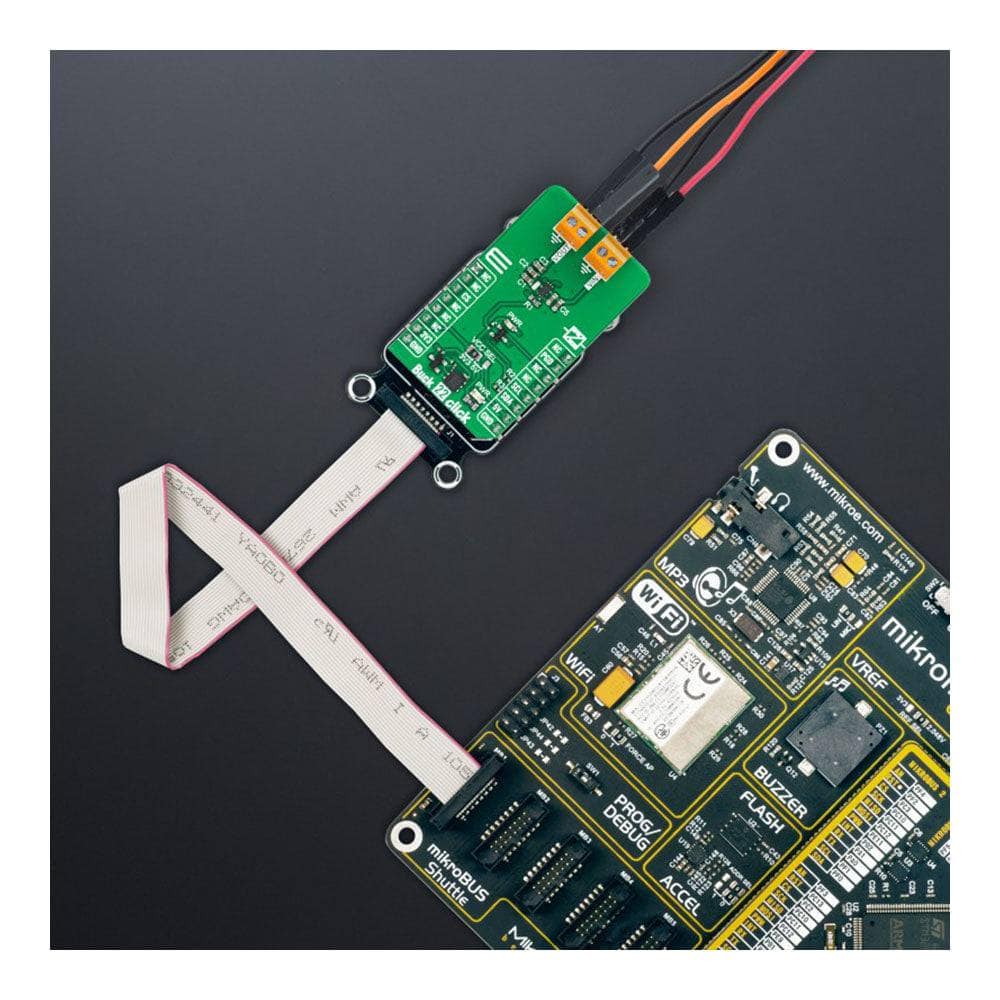
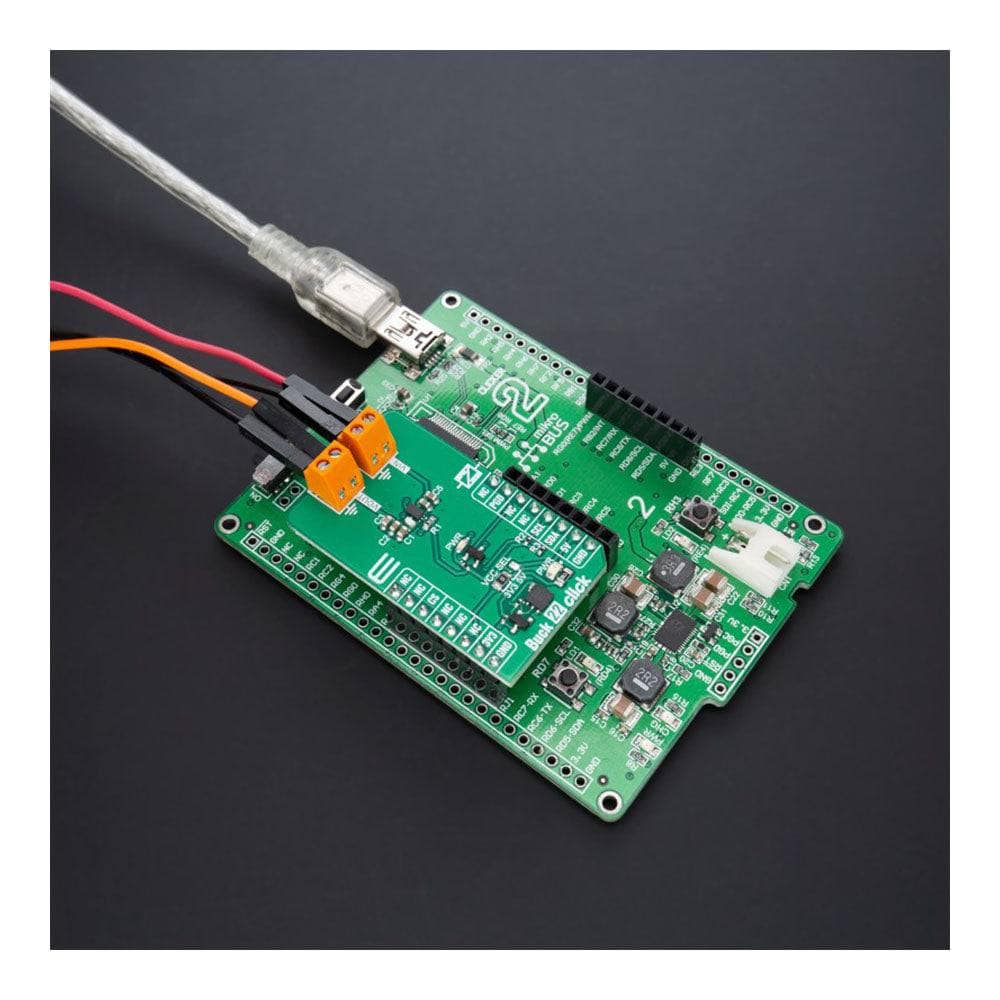
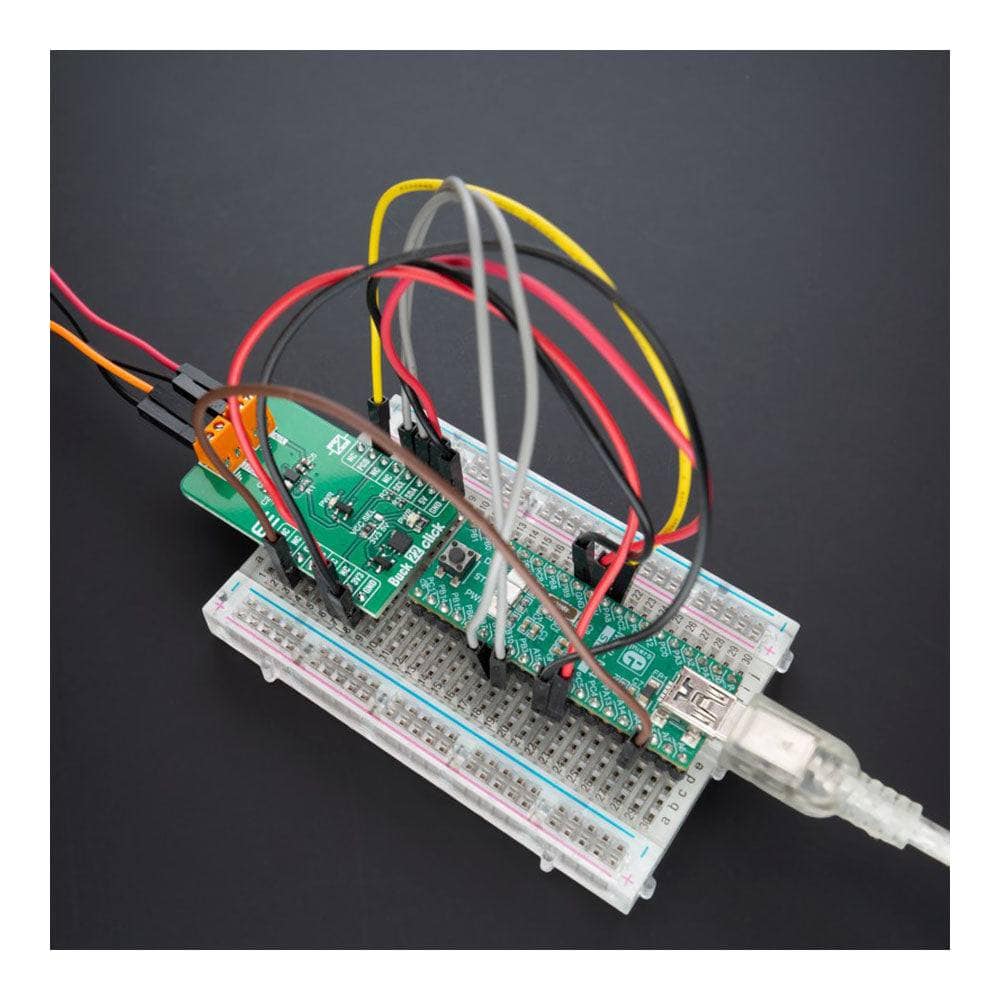
Key Features
Overview
The Buck 22 Click Board™ is a compact add-on board that steps down the voltage from its input (supply) to its output (load). This board features the TPS62869, a high-frequency synchronous step-down converter with an I2C interface from Texas Instruments, providing an efficient, adaptive, and high power-density solution. The TPS62869 operates in PWM mode at medium to heavy loads (for the slightest output voltage ripple). It automatically enters Power-Save Mode operation at a light load to maintain high efficiency over the entire output load current range. With its DCS-Control™ architecture, excellent load transient performance and tight output voltage accuracy are achieved alongside adjustable output voltage range from 0.8V to 3.35V with a 10mV step size. This Click board™ is used to derive the required input voltage from a higher voltage source for FPGAs, ASICs, video chipsets, solid-state drives, and many more.
The Buck 22 Click Board™ is supported by a mikroSDK-compliant library, which includes functions that simplify software development. This Click board™ comes as a thoroughly tested product, ready to be used on a system equipped with the mikroBUS™ socket.
Downloads
How Does The uck 22 Click Board™ Work?
The Buck 22 Click Board™ is based on the TPS62869, a synchronous step-down converter with an I2C interface from Texas Instruments. The TPS62869 base its work on the DCS-Control™ topology and operates in PWM (pulse width modulation) mode for medium to heavy load conditions and Power Save Mode at light load currents. In PWM mode, the converter operates with its nominal switching frequency of 2.4MHz, having a controlled frequency variation over the input voltage range from the VIN terminal from 2.4 up to 5.5V. Because DCS-Control™ supports both operation modes (PWM and PFM selectable through a serial interface) within a single building block, the transition from PWM mode to Power Save Mode is seamless and without effects on the output voltage, providing an efficient, adaptive, and high power-density solution.
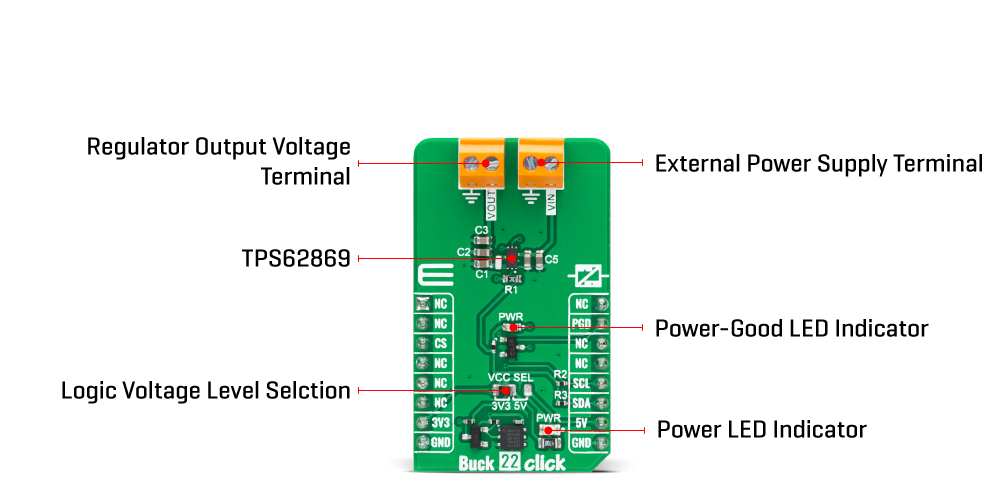
With its DCS-Control™ architecture, excellent load transient performance and tight output voltage accuracy are achieved alongside adjustable output voltage and current ranges from 0.8V to 3.35V and up to 6A on the VOUT terminal with a 10mV step size. As the load current decreases, the TPS62869 enters Power Save Mode operation, which occurs when the inductor current becomes discontinuous, reaching 0A during a switching cycle. In Power Save Mode, the output voltage rises slightly above the nominal output voltage.
The Buck 22 Click Board™ communicates with MCU using the standard I2C 2-Wire interface to read data and configure settings, supporting a Fast Mode operation up to 400kHz. Besides, it also possesses the power-good function, routed to the red LED marked as PWR and INT pin of the mikroBUS™ socket, indicating that the output reached regulation.
The Buck 22 Click Board™ can operate with both 3.3V and 5V logic voltage levels selected via the VCC SEL jumper. This way, it is allowed for both 3.3V and 5V capable MCUs to use the communication lines properly. However, the Click board™ comes equipped with a library containing easy-to-use functions and an example code that can be used, as a reference, for further development.
SPECIFICATIONS
| Type | Buck |
| Applications | Can be used to derive the required input voltage from a higher voltage source for FPGAs, ASICs, video chipsets, solid-state drives, and more |
| On-board modules | TPS62869 - synchronous step-down converter with an I2C interface from Texas Instruments |
| Key Features | DCS-Control topology for fast transient response, adjustable output voltage, 1% output voltage accuracy, 2.4MHz switching frequency, I2C interface, Power-Save Mode, Power-Good indicator, and more |
| Interface | I2C |
| Compatibility | mikroBUS |
| Click board size | M (42.9 x 25.4 mm) |
| Input Voltage | 3.3V or 5V,External |
PINOUT DIAGRAM
This table shows how the pinout of the Buck 22 Click Board™ corresponds to the pinout on the mikroBUS™ socket (the latter shown in the two middle columns).
| Notes | Pin |  |
Pin | Notes | |||
|---|---|---|---|---|---|---|---|
| NC | 1 | AN | PWM | 16 | NC | ||
| NC | 2 | RST | INT | 15 | PGD | Power-Good Indicator | |
| NC | 3 | CS | RX | 14 | NC | ||
| NC | 4 | SCK | TX | 13 | NC | ||
| NC | 5 | MISO | SCL | 12 | SCL | I2C Clock | |
| NC | 6 | MOSI | SDA | 11 | SDA | I2C Data | |
| Power Supply | 3.3V | 7 | 3.3V | 5V | 10 | 5V | Power Supply |
| Ground | GND | 8 | GND | GND | 9 | GND | Ground |
ONBOARD SETTINGS AND INDICATORS
| Label | Name | Default | Description |
|---|---|---|---|
| LD1 | PWR | - | Power LED Indicator |
| LD2 | PWR | - | Power-Good LED Indicator |
| JP1 | VCC SEL | Left | Logic Level Voltage Selection 3V3/5V: Left position 3V3, Right position 5V |
BUCK 22 CLICK ELECTRICAL SPECIFICATIONS
| Description | Min | Typ | Max | Unit |
|---|---|---|---|---|
| Supply Voltage | - | 3.3 | - | V |
| External Power Supply VIN | 2.4 | - | 5.5 | V |
| Output Voltage VOUT | 0.8 | - | 3.35 | V |
| Output Current | 0 | - | 6 | A |
| General Information | |
|---|---|
Part Number (SKU) |
MIKROE-5446
|
Manufacturer |
|
| Physical and Mechanical | |
Weight |
0.02 kg
|
| Other | |
Country of Origin |
|
HS Code Customs Tariff code
|
|
EAN |
8606027386398
|
Warranty |
|
Frequently Asked Questions
Have a Question?
Be the first to ask a question about this.

